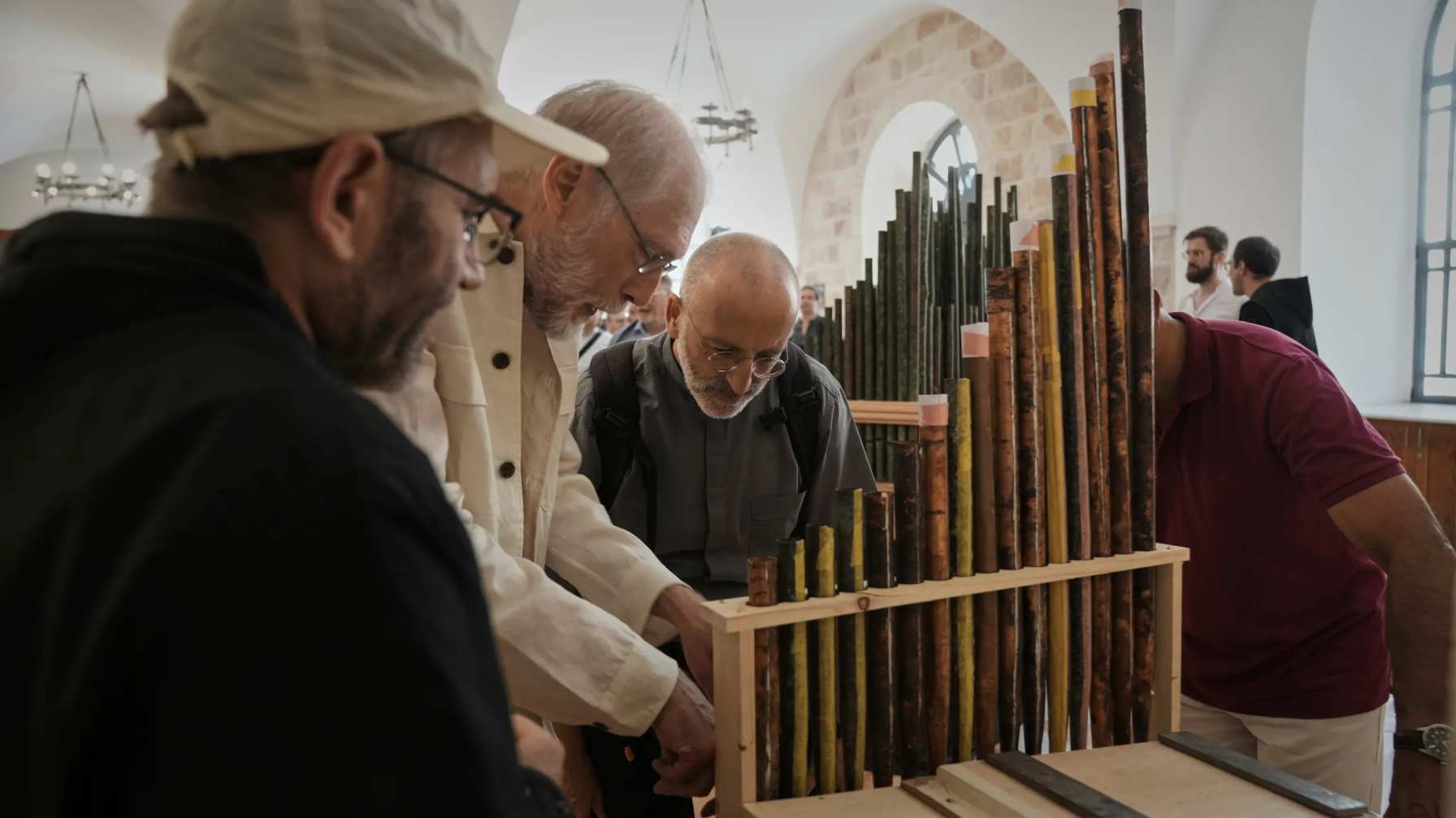After nearly 800 years of silence, the pipes of a medieval organ discovered near the Church of the Nativity in Bethlehem are once again filling a Jerusalem monastery with their ancient melodies.
The 11th-century instrument, buried for centuries and uncovered in 1906, has been painstakingly restored to play the original sounds that echoed during the Crusader era.
“This is a window into the past… we have the opportunity for the first time in modern history of listening to a medieval sound which is a thousand years old,” said David Catalunya, a Spanish researcher who spent more than five years bringing the organ back to life.
“And it’s not through a recreation or a hypothetical reconstruction, but it’s really the original sound: the same vibration that the Crusaders heard at the Nativity Church.”
Catalunya, who affectionately calls the organ a “miracle,” demonstrated its powerful tones by pulling small tabs that release music from the modest wooden instrument.
The organ is now housed at the Monastery of Saint Saviour in Jerusalem’s Old City and is set to be displayed in a museum of the Franciscan Custody of the Holy Land.
Alvaro Torrente, a musicologist involved in the project, compared the find to a living dinosaur.
“This is not a fossil, this is the real object and the real sound,” he said, highlighting the organ’s rarity and remarkable state of preservation.
Father Eugenio Alliata, a Franciscan archaeologist, described the discovery as “almost by chance” during construction of a pilgrim hostel, when 222 copper pipes and a bell carillon were unearthed near the Church of the Nativity.
Catalunya said the pieces had been buried with “utmost care,” which allowed researchers to reconstruct the instrument with great precision.
Koos van de Linde, a leading organ specialist, emphasized the historical significance of the resurrection.
“The hope the Crusaders who buried these pieces had, that one day they would resound again, was not in vain. It was an immense honour to witness and participate in their resurrection,” he said.
The organ’s uniqueness lies not only in its antiquity but also in its design: 18 pipes produce a single note. While the oldest known organs date to the 15th century, this one was crafted in 11th-century France and brought to Bethlehem by Crusaders in the 12th century.
Torrente noted the instrument symbolized a milestone in sacred music.
“The Christians of Europe brought to the Church of the Nativity in Bethlehem the most avant-garde musical instrument used at the time in liturgy: the organ, an instrument designed to become the emblem of sacred music,” he said.
He hopes the discovery will inspire further interest, as the organ, which the team calls the “Bethlehem organ,” has not yet revealed all its possible melodies.

